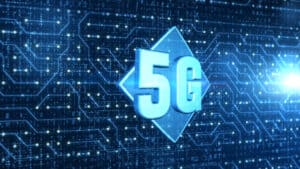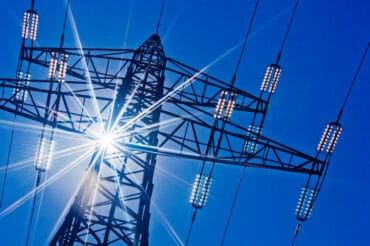
5G networks act as an enabler, driving efficiency through automation and use of technologies reliant on high-quality connectivity such as edge computing and IoT.
Private 5G networks are a game-changing technology development that is one of the top trends shaping information technology this year. However, questions and concerns still shape perceptions about organizations’ readiness to adopt the solution,
That’s the word from McKinsey, which released its latest technology projections, identifying 5G as a key trend among forces shaping today’s information technology. “Private 5G networks are a proven technology, with many players already reaping their benefits,” the McKinsey authors state. In addition, they add, “other technologies, such as IoT and automated guided vehicles, perform much better when using high-quality networks enabled by private 5G.”
The challenge, they note, is the shift from 4G LTE to private 5G, “which may not be cost-effective for all players; this would depend on a player’s technological aspirations and planned use cases.”
5G networks act as an enabler “of revolutionary capabilities of digital transformations, driving efficiency through automation and enabling technologies reliant on high-quality connectivity such as cloud computing and IoT,” they add.
The risks and uncertainties still seen with 5G networks include the relative immaturity of its ecosystem, the McKinsey authors caution. “The ecosystems for evolving connectivity modalities such as LPWA and LEO are maturing, but so far, few players provide solutions and services in markets.” Availability is another cautionary aspect of 5G, they add. “Some technologies, such as high-band 5G and LEO, may be limited by the large capital investments required to build out networks with competitive coverage and performance for mainstream use cases.”
See also: 5G is Making On and Offline Retail Fun Again
Questions being raised about 5G adoption include the following:
Can 5G completely replace 4G LTE? “Private 5G networks are a proven technology, with many players already reaping their benefits,” the McKinsey co-authors state. “Other technologies, such as IoT and automated guided vehicles, perform much better when using high-quality networks enabled by private 5G. However, shifting from 4G LTE to private 5G may not be cost-effective for all players; this would depend on a player’s technological aspirations and planned use cases.”
How will satellite constellations shift the balance of bandwidth from terrestrial connectivity to space-to-Earth connectivity? “A few players are already piloting internet services; there are signs that consumer devices with LEO connectivity are on the horizon,” the team observes. “However, due to high capital expenditures and user costs, the business model
and pricing will be a challenge for scaling up networks, nor can LEO connectivity fully serve as a substitute for terrestrial networks for all use cases that rely on cost-efficiency, energy consumption, or overall performance.”
Will 5G outcompete LPWA networks for IoT applications? “Depending on the availability of traditional LTE networks, a player might choose between licensed or unlicensed cellular LPWA standards; this choice may also be critical when dealing with stationary and mobile devices,” the co-authors state. “LPWA standards vary in terms of bandwidth, cost, power consumption, range, and other features; depending on the final use case for the player, some standards might be more appropriate than others.”
As advanced connectivity becomes broadly available, “industries will find innovative use cases,” they state. The new capabilities for industrial companies and consumers are projected to have a $2 trillion impact on global GDP, “driven by operational enhancements resulting from advanced connectivity in just four major industries.” These four key industries include the following:
- Automotive and assembly: “Connectivity could enable preventive maintenance, improve navigation, prevent collisions, enable various levels of vehicle autonomy and carpooling services, and provide personalized infotainment offerings.”
- Healthcare systems and services: Low-latency networks and high density of connected devices and sensors make it possible to monitor patients at home in real time, which could be a major boon in the treatment of chronic diseases.”
- Aerospace and defense: “From critical communications through non-terrestrial networks (NTN) to connected field assets, connectivity expansions such as 5G networks can vastly boost capabilities and performance for aerospace and defense users.”
- Retail: “Connectivity allows retailers to manage inventory, improve warehouse operations, coordinate supply chains, eliminate checkout activities, and add augmented reality for better product information.”
The McKinsey authors also discussed the impact on additional industries:
- Telecommunications: Introduce new B2C and B2B service offerings, such as improved cellular services for retail customers and private 5G solutions for enterprise customers.
- Aviation, travel, and logistics: “Track and trace products and provide data to help customers optimize supply chains using LPWA wireless technology.”
- Construction and building materials: “Building Information Modelling (BIM), onsite 3-D printing, and AR applications will all require high-speed, low-latency, expansive connectivity networks.”
- Information technology and electronics: “Demand for smart sensors and IoT1-enabled devices will grow as connectivity improves and cost drops.”
- Media and entertainment: “Enable high speed, value-creating entertainment experiences within limited disruptions as new devices – such as AR/VR devices — enter the market.”
- Metals and mining: “Expand coverage to enable “smart mining” and digitization/automation practices that will enhance productivity and safety.”
- Electric power, natural gas, and utilities: “Implement a smart utility grid with smart meters, sensors, and other cloud devices.”
- Oil and gas: “Leverage advanced connectivity technologies to permit and optimize real-time monitoring of drilling and production activities, as well as digital tools and analytics to offshore operators.”





